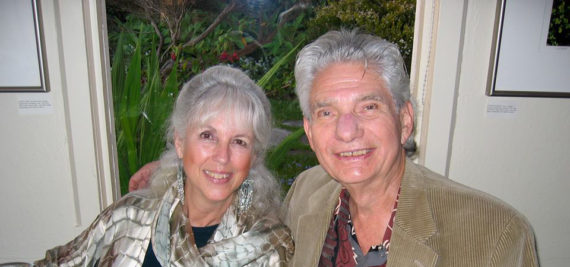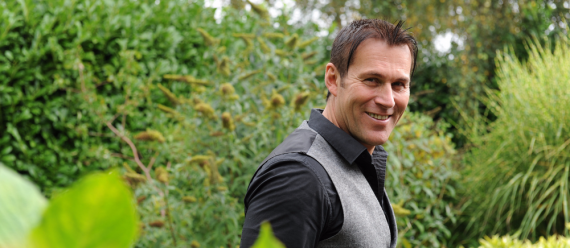This article is the fourth in a series of four written in 1994 for the journal, Psychotherapy in Australia In our previous articles we spoke of the many selves that make up the psyche. In this article, we would like to concentrate upon a self that assumes major importance in the lives of most people and is of particular interest to psychotherapists, the Inner Critic. This Inner Critic is a voice within each of us that criticizes us mercilessly. With an IQ of about 500 that enables it to spot all of our shortcomings, an uncanny ability to read our most secret feelings, X-ray vision to reveal deficiencies that would be invisible to the naked eye, infrared tracking systems that can look within our dreams at night, and standards of comparison that would make Einstein look stupid and Mother Theresa look selfish, this Inner Critic takes upon itself the task of evaluating us. Needless to say, it always finds us falling short of expectations. When we speak of this Inner Critic we mean the voice within that criticizes us, we have called the self within us that criticizes other people “the Judge”.
 The Inner Critic is of special interest to psychotherapists, whatever their orientation because of it role in emotional distress. The anguish caused by the Inner Critic is always a basic factor in low self-esteem and is often a major impediment to any growth or change. Many of the difficulties in therapy experienced by your clients can directly be traced to this self which will question their ability to learn or to grow or, at the very least, will attack them for needing help in the first place. The Inner Critic is often directly involved in anxiety, depression, sleep disorders, addictions, and a variety of self destructive behaviors. It is usually a key factor in dysfunctional or abusive relationships.
The Inner Critic is of special interest to psychotherapists, whatever their orientation because of it role in emotional distress. The anguish caused by the Inner Critic is always a basic factor in low self-esteem and is often a major impediment to any growth or change. Many of the difficulties in therapy experienced by your clients can directly be traced to this self which will question their ability to learn or to grow or, at the very least, will attack them for needing help in the first place. The Inner Critic is often directly involved in anxiety, depression, sleep disorders, addictions, and a variety of self destructive behaviors. It is usually a key factor in dysfunctional or abusive relationships.
Most people are not even aware that there is a voice or a self speaking inside of them because the Inner Critic’s constant judgments have been with them since early childhood and its running critical commentary feels quite natural. It develops early in their lives, absorbing (or internalizing) the judgments of the people around them and the expectations of the society in which they live. The more difficult or abusive the childhood, the more vicious and abusive the Inner Critic is likely to be.
The Inner Critic as a Citizen of the World
We have discovered Inner Critics wherever we have traveled and they are amazingly similar in their ability to cripple people and to keep them unhappy, frightened, constricted and ineffective. However, the content of their criticisms varies according to the value system of each particular culture. We have been particularly fascinated by these variations.
For example, in America our critics are likely to criticize us if we are not special enough or if we do not stand out. Our Critics do not want us to disappear in the crowd, to be ordinary. Australian Critics take the opposite view. In Australia you have a saying that goes something like this: “Don’t be a tall poppy because tall poppies get their heads cut off.” You are not supposed to stand out, to be special, or to do anything that will draw special attention to you. Therefore, the Australian Inner Critics are quite judgmental towards people who stand out too much or who try to be special.
The Development of the Inner Critic
The Inner Critic’s original function is to spare us shame and pain. In the growing up process parents must teach children to look good and to behave appropriately in order to succeed in the world, both at home and in the workplace. Therefore parents look at their children, try their best to figure out what is wrong with them, and then do what they can to fix it. (The same can be true of relatives, teachers, religious leaders, people at work and general acquaintances.)
Ann’s mother fears that her daughter is not attractive, and tries her best to correct the “problems” she thinks she sees. She wants Ann to be popular at school and eventually she hopes that Ann will find a good husband. She tries to be subtle, but she is constantly making suggestions about how Ann might improve her looks, her weight, her behavior. Sometimes she lets Ann know what is wrong by comparing her to someone else who seems to do things right. As Ann takes in her mother’s messages, she begins to feel that she is not acceptable the way she is, but that she must change herself before others will like her.
Some mothers are more indirect than Ann’s, pointing out what is wrong with the way other people dress or act so that the child will know what one should not do. Some mothers do not say anything. They just look at a child with a worried expression and he or she must guess what is wrong!
Tom’s Dad observes that his son is not careful enough when he helps with the chores, or when he does his homework. He points out what Tom is doing wrong, or tells him that he is clumsy or careless. He wants Tom to be disciplined, careful, and clever. He wants all his children to be able to be successful in life. As Tom listens to his father, he begins to feel pretty stupid.
Ann’s mother and Tom’s father are ordinary parents. They need to succeed in making their children proper people – whatever that means to them – in order to feel good about themselves. In the process of socializing a child, even the most gentle and accepting parents must discourage or change certain behaviors, set limits, convey expectations and teach basic elements of personal hygiene and appearance. Parenting usually involves a certain amount of going against the child’s natural inclinations. No matter how this is done, there is an implication that there is something unacceptable about the child.
In order to protect themselves from the pain and the shame of always being found “less than” they should be, a voice develops within these children that echoes the concerns of their parents, their church, or of other people who are important to them. This Inner Critic is a “self ”, a separate subpersonality, that criticizes them before their parents – or anyone else, for that matter – can!
This Inner Critic is extremely anxious, almost desperate, for them to succeed in the world and to be accepted and liked by others.
As we leave childhood, this Inner Critic continues its attempts to make us acceptable to others. Unfortunately, it often does not know when to stop. The Inner Critic does not know when enough is enough. It has a tendency to grow until it is out of control and begins to undermine us and to do real damage. At this point, its original intent gets lost.
The Relationship of the Inner Critic to the Other Selves
The Inner Critic, in addition to its overall job of policing our every move, supports our primary selves, those selves that are primary in our psychological makeup and determine who we are in the world. For instance, if our primary self is a Responsible Parent, the Inner Critic will criticize any thoughts or actions that are not responsible such as selfishness, self-indulgence, frivolity, irresponsibility. The latter are representative of our disowned selves. (We discussed these selves in the November 1994 issue of Psychotherapy.)
Often, if a client has made an effort to change his or her primary self system through therapy, but has not truly integrated this change, the Inner Critic will not only criticize the disowned actions, e.g., selfish behavior, but will criticize the primary self for its shortcomings as well. Thus, the client will hear her Critic make conflicting statements such as: “You are too selfish.” and “You are too co-dependent and take too much responsibility for others.”
The Inner Critic and Relationship
As a therapist it is important to note that the Inner Critic is a major player on the stage of relationship. We cannot discuss this in detail as we do in Embracing Your Inner Critic, but let us look at some of the important ways in which it influences one’s style of relating. The Inner Critic is basically relationship-oriented and has developed in childhood to make our relationships less painful and to help us to avoid humiliation. It carries with it an underlying fear that we will be found unacceptable and therefore will be rejected or abandoned.
Since it is deeply concerned about our relationships with others, the Inner Critic spends a great deal of time worrying about what others think of us. It keeps us vulnerable and childlike and puts us at the mercy of the judgments, needs and demands of everyone around us. We have no right to be separate or to have our own needs. This puts us into the position of a child with others, making it impossible to maintain a sense of self, to make decisions that reflect our own needs and individuality or to establish proper boundaries. In our terms, a strong Inner Critic immediately sets the stage for a parent/child bonding pattern.
A well-developed, strong Inner Critic does not allow us to accept compliments or love, but questions the motives or the intelligence of the giver, often whispering something like: “If she/ her knew what you are really like!” softly in our ears. It responds to the judgments of everyone around us by agreeing with them. Ironically, although the Inner Critic’s aim is to spare us judgment, it is quite likely to elicit “The Judge” in those around us. This can happen energetically (almost like a magnetic attraction) or directly because once the Inner Critic criticizes something in us, we are open and vulnerable to the same criticism from the outside.
Last, but certainly not least, the Inner Critic prevents intimacy directly by shaming and abusing our Inner Child so that it cannot relate properly to others. It is this child that carries our deepest sensitivities and feelings and is a major factor in truly intimate connections. When it is frightened, abused and feels like a victim, it cannot relate normally and naturally and the deep, soul-satisfying intimacy that it brings with it is missing from all our relationships.
 The Inner Critic is responsible for a great many of the difficulties commonly experienced in relationships. As a therapist, you might find it interesting to explore its role in the relationships of your clients. For instance, its comments often play an important role in re-creating childhood relationships, particularly if these have been abusive. Your client may have moved out of an abusive situation with her parents or spouse, but within her is her Inner Critic repeating all the old criticisms and throwing her into despair. It is important to remain aware of the power of this inner voice when working to remedy difficult outer situations.
The Inner Critic is responsible for a great many of the difficulties commonly experienced in relationships. As a therapist, you might find it interesting to explore its role in the relationships of your clients. For instance, its comments often play an important role in re-creating childhood relationships, particularly if these have been abusive. Your client may have moved out of an abusive situation with her parents or spouse, but within her is her Inner Critic repeating all the old criticisms and throwing her into despair. It is important to remain aware of the power of this inner voice when working to remedy difficult outer situations.
Working with the Inner Critic
With this knowledge, you can work with the Inner Critic in any way that suits your own therapeutic orientation. For us, however, the first step in working with the Inner Critic is to show the client that there is a voice within him or her that is incessantly critical. In our book, Embracing Your Inner Critic, we have likened this voice to a radio station that has been playing within one’s head since early childhood, a voice so familiar that it is no longer noticed. We find that the best way to help the client become aware of this self and to separate from it is to utilize the Voice Dialogue method (Psychotherapy, February, 1995) because with this the therapist can speak directly to the Inner Critic. As a therapist, you might address Susan’s Inner Critic as follows:
Therapist: I understand that you are not pleased with the way Susan behaves. Tell me, what is wrong with her?
Susan’s Critic: Well, she’s inconsiderate. She doesn’t answer her mail or return her phone calls quickly enough. I think that she is too self-centered, she’s basically a selfish person, just like her mother always said.
Therapist: Is there anything else?
Susan’s Critic: Yes, she’s too emotional. When she gets upset, she forgets about her family and her friends. I wish she would pay a little more attention to what other people think. While I’m thinking about it, I wish she would pay more attention to the way she looks. I think that she’s gotten a little careless about her appearance and people notice things like that.
Therapist: What would you say if Susan started to pay more attention to her appearance?
Susan’s Critic: I guess I would say that she’s too self-indulgent.
Speaking directly to the Inner Critic in this way begins to separate it from the other selves and the client is able to view it, and its criticisms, more objectively. Initial conversations with the Inner Critic usually focus upon its criticisms, e.g., of the client’s physical appearance, emotions, intellectual functioning, relationship skills, spiritual practices, etc. These conversations often illustrate the impossibility of pleasing the Inner Critic. With Susan, for example, the Inner Critic would criticize her if she did pay more attention to her appearance even though it has been criticizing her up until now for not paying enough attention. Contradictions of this type are very common.
Once the client is aware of the existence of the Inner Critic and has heard the range of its criticism, the therapist can move to the second step and begin to deepen the exploration and look for the anxiety that underlies its attacks. Thus, the focus shifts from the content of the critic attack (the selfishness, the lack of concern for what others think) to the underlying issues. If we were to follow up with Susan, this is what you might hear:
Therapist: What would happen if Susan did not listen to you and she remained selfish and inconsiderate?
Susan’s Critic: Nobody would like her anymore. People don’t like people who are inconsiderate.
Therapist: Then what would happen?
Susan’s Critic: Then nobody would want to be with her anymore and she would be alone. She cannot bear being alone.
Now the therapist has uncovered the true anxiety. This criticism is not about being selfish. This is an alert, an emergency call for help from an Inner Critic suffering an anxiety attack. The Critic is panicked that if she does not behave herself properly, Susan will be alone and unloved. Since Susan is an extroverted, relationship oriented person who has never developed her ability to be alone, her Inner Critic fears that she would not be able to function without the support of others.
Now we come to the third step in this process, the move beyond duality and the embracing of opposites. The Inner Critic has actually led the therapist to the basic issues that need addressing. There is an imbalance in Susan’s psyche. Her primary selves are emotional, responsible, relationship-oriented and very concerned about what people will think. They will do everything that they can to keep her in contact with other people. Whenever Susan does anything that moves against the rules of these selves, her Critic attacks her.
The therapist is now in a position to deal with some of these underlying issues first by helping her to separate from her primary selves and then by helping her to contact and develop the opposite, or disowned, selves. In this way Susan would gain access to her introversion, independence, and objectivity. These would enable her to balance her caring, emotional, relationship-oriented selves. This moves her beyond duality, into the balance of opposites contained within an Aware Ego.
The Inner Critic Transformation
 As Susan integrates her opposites, her Inner Critic will relax. We speak of this embracing of opposites as the development of an Aware Ego. The more opposites embraced in this way and the more choices that Susan has available to her in life (i.e., the larger her Aware Ego), the less there is to make her Inner Critic anxious.
As Susan integrates her opposites, her Inner Critic will relax. We speak of this embracing of opposites as the development of an Aware Ego. The more opposites embraced in this way and the more choices that Susan has available to her in life (i.e., the larger her Aware Ego), the less there is to make her Inner Critic anxious.
When its anxiety abates, the Inner Critic becomes quiet and its criticisms become objective and supportive rather than destructive. It turns into an objective mind which gives Susan focus, discernment, discipline and attention to detail. Last but not least, its aura of authority will be used to support her rather than to attack her.
Until now, the Inner Critic which does indeed cause intense suffering, has been treated as an enemy by most therapeutic systems. Often the therapist’s attempt to destroy this Inner Critic have only served to strengthen it. We have found that when its message is properly understood, the Inner Critic can become a powerful ally in the journey towards growth and wholeness.
the Inner Critic PDF[:nl]by Hal Stone, Ph.D. & Sidra Stone, Ph.D.
This article is the fourth in a series of four written in 1994 for the journal, Psychotherapy in Australia In our previous articles we spoke of the many selves that make up the psyche. In this article, we would like to concentrate upon a self that assumes major importance in the lives of most people and is of particular interest to psychotherapists, the Inner Critic. This Inner Critic is a voice within each of us that criticizes us mercilessly. With an IQ of about 500 that enables it to spot all of our shortcomings, an uncanny ability to read our most secret feelings, X-ray vision to reveal deficiencies that would be invisible to the naked eye, infrared tracking systems that can look within our dreams at night, and standards of comparison that would make Einstein look stupid and Mother Theresa look selfish, this Inner Critic takes upon itself the task of evaluating us. Needless to say, it always finds us falling short of expectations. When we speak of this Inner Critic we mean the voice within that criticizes us, we have called the self within us that criticizes other people “the Judge”.
 The Inner Critic is of special interest to psychotherapists, whatever their orientation because of it role in emotional distress. The anguish caused by the Inner Critic is always a basic factor in low self-esteem and is often a major impediment to any growth or change. Many of the difficulties in therapy experienced by your clients can directly be traced to this self which will question their ability to learn or to grow or, at the very least, will attack them for needing help in the first place. The Inner Critic is often directly involved in anxiety, depression, sleep disorders, addictions, and a variety of self destructive behaviors. It is usually a key factor in dysfunctional or abusive relationships.
The Inner Critic is of special interest to psychotherapists, whatever their orientation because of it role in emotional distress. The anguish caused by the Inner Critic is always a basic factor in low self-esteem and is often a major impediment to any growth or change. Many of the difficulties in therapy experienced by your clients can directly be traced to this self which will question their ability to learn or to grow or, at the very least, will attack them for needing help in the first place. The Inner Critic is often directly involved in anxiety, depression, sleep disorders, addictions, and a variety of self destructive behaviors. It is usually a key factor in dysfunctional or abusive relationships.
Most people are not even aware that there is a voice or a self speaking inside of them because the Inner Critic’s constant judgments have been with them since early childhood and its running critical commentary feels quite natural. It develops early in their lives, absorbing (or internalizing) the judgments of the people around them and the expectations of the society in which they live. The more difficult or abusive the childhood, the more vicious and abusive the Inner Critic is likely to be.
The Inner Critic as a Citizen of the World
We have discovered Inner Critics wherever we have traveled and they are amazingly similar in their ability to cripple people and to keep them unhappy, frightened, constricted and ineffective. However, the content of their criticisms varies according to the value system of each particular culture. We have been particularly fascinated by these variations.
For example, in America our critics are likely to criticize us if we are not special enough or if we do not stand out. Our Critics do not want us to disappear in the crowd, to be ordinary. Australian Critics take the opposite view. In Australia you have a saying that goes something like this: “Don’t be a tall poppy because tall poppies get their heads cut off.” You are not supposed to stand out, to be special, or to do anything that will draw special attention to you. Therefore, the Australian Inner Critics are quite judgmental towards people who stand out too much or who try to be special.
The Development of the Inner Critic
The Inner Critic’s original function is to spare us shame and pain. In the growing up process parents must teach children to look good and to behave appropriately in order to succeed in the world, both at home and in the workplace. Therefore parents look at their children, try their best to figure out what is wrong with them, and then do what they can to fix it. (The same can be true of relatives, teachers, religious leaders, people at work and general acquaintances.)
Ann’s mother fears that her daughter is not attractive, and tries her best to correct the “problems” she thinks she sees. She wants Ann to be popular at school and eventually she hopes that Ann will find a good husband. She tries to be subtle, but she is constantly making suggestions about how Ann might improve her looks, her weight, her behavior. Sometimes she lets Ann know what is wrong by comparing her to someone else who seems to do things right. As Ann takes in her mother’s messages, she begins to feel that she is not acceptable the way she is, but that she must change herself before others will like her.
Some mothers are more indirect than Ann’s, pointing out what is wrong with the way other people dress or act so that the child will know what one should not do. Some mothers do not say anything. They just look at a child with a worried expression and he or she must guess what is wrong!
Tom’s Dad observes that his son is not careful enough when he helps with the chores, or when he does his homework. He points out what Tom is doing wrong, or tells him that he is clumsy or careless. He wants Tom to be disciplined, careful, and clever. He wants all his children to be able to be successful in life. As Tom listens to his father, he begins to feel pretty stupid.
Ann’s mother and Tom’s father are ordinary parents. They need to succeed in making their children proper people – whatever that means to them – in order to feel good about themselves. In the process of socializing a child, even the most gentle and accepting parents must discourage or change certain behaviors, set limits, convey expectations and teach basic elements of personal hygiene and appearance. Parenting usually involves a certain amount of going against the child’s natural inclinations. No matter how this is done, there is an implication that there is something unacceptable about the child.
In order to protect themselves from the pain and the shame of always being found “less than” they should be, a voice develops within these children that echoes the concerns of their parents, their church, or of other people who are important to them. This Inner Critic is a “self ”, a separate subpersonality, that criticizes them before their parents – or anyone else, for that matter – can!
This Inner Critic is extremely anxious, almost desperate, for them to succeed in the world and to be accepted and liked by others.
As we leave childhood, this Inner Critic continues its attempts to make us acceptable to others. Unfortunately, it often does not know when to stop. The Inner Critic does not know when enough is enough. It has a tendency to grow until it is out of control and begins to undermine us and to do real damage. At this point, its original intent gets lost.
The Relationship of the Inner Critic to the Other Selves
The Inner Critic, in addition to its overall job of policing our every move, supports our primary selves, those selves that are primary in our psychological makeup and determine who we are in the world. For instance, if our primary self is a Responsible Parent, the Inner Critic will criticize any thoughts or actions that are not responsible such as selfishness, self-indulgence, frivolity, irresponsibility. The latter are representative of our disowned selves. (We discussed these selves in the November 1994 issue of Psychotherapy.)
Often, if a client has made an effort to change his or her primary self system through therapy, but has not truly integrated this change, the Inner Critic will not only criticize the disowned actions, e.g., selfish behavior, but will criticize the primary self for its shortcomings as well. Thus, the client will hear her Critic make conflicting statements such as: “You are too selfish.” and “You are too co-dependent and take too much responsibility for others.”
The Inner Critic and Relationship
As a therapist it is important to note that the Inner Critic is a major player on the stage of relationship. We cannot discuss this in detail as we do in Embracing Your Inner Critic, but let us look at some of the important ways in which it influences one’s style of relating. The Inner Critic is basically relationship-oriented and has developed in childhood to make our relationships less painful and to help us to avoid humiliation. It carries with it an underlying fear that we will be found unacceptable and therefore will be rejected or abandoned.
Since it is deeply concerned about our relationships with others, the Inner Critic spends a great deal of time worrying about what others think of us. It keeps us vulnerable and childlike and puts us at the mercy of the judgments, needs and demands of everyone around us. We have no right to be separate or to have our own needs. This puts us into the position of a child with others, making it impossible to maintain a sense of self, to make decisions that reflect our own needs and individuality or to establish proper boundaries. In our terms, a strong Inner Critic immediately sets the stage for a parent/child bonding pattern.
A well-developed, strong Inner Critic does not allow us to accept compliments or love, but questions the motives or the intelligence of the giver, often whispering something like: “If she/ her knew what you are really like!” softly in our ears. It responds to the judgments of everyone around us by agreeing with them. Ironically, although the Inner Critic’s aim is to spare us judgment, it is quite likely to elicit “The Judge” in those around us. This can happen energetically (almost like a magnetic attraction) or directly because once the Inner Critic criticizes something in us, we are open and vulnerable to the same criticism from the outside.
Last, but certainly not least, the Inner Critic prevents intimacy directly by shaming and abusing our Inner Child so that it cannot relate properly to others. It is this child that carries our deepest sensitivities and feelings and is a major factor in truly intimate connections. When it is frightened, abused and feels like a victim, it cannot relate normally and naturally and the deep, soul-satisfying intimacy that it brings with it is missing from all our relationships.
 The Inner Critic is responsible for a great many of the difficulties commonly experienced in relationships. As a therapist, you might find it interesting to explore its role in the relationships of your clients. For instance, its comments often play an important role in re-creating childhood relationships, particularly if these have been abusive. Your client may have moved out of an abusive situation with her parents or spouse, but within her is her Inner Critic repeating all the old criticisms and throwing her into despair. It is important to remain aware of the power of this inner voice when working to remedy difficult outer situations.
The Inner Critic is responsible for a great many of the difficulties commonly experienced in relationships. As a therapist, you might find it interesting to explore its role in the relationships of your clients. For instance, its comments often play an important role in re-creating childhood relationships, particularly if these have been abusive. Your client may have moved out of an abusive situation with her parents or spouse, but within her is her Inner Critic repeating all the old criticisms and throwing her into despair. It is important to remain aware of the power of this inner voice when working to remedy difficult outer situations.
Working with the Inner Critic
With this knowledge, you can work with the Inner Critic in any way that suits your own therapeutic orientation. For us, however, the first step in working with the Inner Critic is to show the client that there is a voice within him or her that is incessantly critical. In our book, Embracing Your Inner Critic, we have likened this voice to a radio station that has been playing within one’s head since early childhood, a voice so familiar that it is no longer noticed. We find that the best way to help the client become aware of this self and to separate from it is to utilize the Voice Dialogue method (Psychotherapy, February, 1995) because with this the therapist can speak directly to the Inner Critic. As a therapist, you might address Susan’s Inner Critic as follows:
Therapist: I understand that you are not pleased with the way Susan behaves. Tell me, what is wrong with her?
Susan’s Critic: Well, she’s inconsiderate. She doesn’t answer her mail or return her phone calls quickly enough. I think that she is too self-centered, she’s basically a selfish person, just like her mother always said.
Therapist: Is there anything else?
Susan’s Critic: Yes, she’s too emotional. When she gets upset, she forgets about her family and her friends. I wish she would pay a little more attention to what other people think. While I’m thinking about it, I wish she would pay more attention to the way she looks. I think that she’s gotten a little careless about her appearance and people notice things like that.
Therapist: What would you say if Susan started to pay more attention to her appearance?
Susan’s Critic: I guess I would say that she’s too self-indulgent.
Speaking directly to the Inner Critic in this way begins to separate it from the other selves and the client is able to view it, and its criticisms, more objectively. Initial conversations with the Inner Critic usually focus upon its criticisms, e.g., of the client’s physical appearance, emotions, intellectual functioning, relationship skills, spiritual practices, etc. These conversations often illustrate the impossibility of pleasing the Inner Critic. With Susan, for example, the Inner Critic would criticize her if she did pay more attention to her appearance even though it has been criticizing her up until now for not paying enough attention. Contradictions of this type are very common.
Once the client is aware of the existence of the Inner Critic and has heard the range of its criticism, the therapist can move to the second step and begin to deepen the exploration and look for the anxiety that underlies its attacks. Thus, the focus shifts from the content of the critic attack (the selfishness, the lack of concern for what others think) to the underlying issues. If we were to follow up with Susan, this is what you might hear:
Therapist: What would happen if Susan did not listen to you and she remained selfish and inconsiderate?
Susan’s Critic: Nobody would like her anymore. People don’t like people who are inconsiderate.
Therapist: Then what would happen?
Susan’s Critic: Then nobody would want to be with her anymore and she would be alone. She cannot bear being alone.
Now the therapist has uncovered the true anxiety. This criticism is not about being selfish. This is an alert, an emergency call for help from an Inner Critic suffering an anxiety attack. The Critic is panicked that if she does not behave herself properly, Susan will be alone and unloved. Since Susan is an extroverted, relationship oriented person who has never developed her ability to be alone, her Inner Critic fears that she would not be able to function without the support of others.
Now we come to the third step in this process, the move beyond duality and the embracing of opposites. The Inner Critic has actually led the therapist to the basic issues that need addressing. There is an imbalance in Susan’s psyche. Her primary selves are emotional, responsible, relationship-oriented and very concerned about what people will think. They will do everything that they can to keep her in contact with other people. Whenever Susan does anything that moves against the rules of these selves, her Critic attacks her.
The therapist is now in a position to deal with some of these underlying issues first by helping her to separate from her primary selves and then by helping her to contact and develop the opposite, or disowned, selves. In this way Susan would gain access to her introversion, independence, and objectivity. These would enable her to balance her caring, emotional, relationship-oriented selves. This moves her beyond duality, into the balance of opposites contained within an Aware Ego.
The Inner Critic Transformation
 As Susan integrates her opposites, her Inner Critic will relax. We speak of this embracing of opposites as the development of an Aware Ego. The more opposites embraced in this way and the more choices that Susan has available to her in life (i.e., the larger her Aware Ego), the less there is to make her Inner Critic anxious.
As Susan integrates her opposites, her Inner Critic will relax. We speak of this embracing of opposites as the development of an Aware Ego. The more opposites embraced in this way and the more choices that Susan has available to her in life (i.e., the larger her Aware Ego), the less there is to make her Inner Critic anxious.
When its anxiety abates, the Inner Critic becomes quiet and its criticisms become objective and supportive rather than destructive. It turns into an objective mind which gives Susan focus, discernment, discipline and attention to detail. Last but not least, its aura of authority will be used to support her rather than to attack her.
Until now, the Inner Critic which does indeed cause intense suffering, has been treated as an enemy by most therapeutic systems. Often the therapist’s attempt to destroy this Inner Critic have only served to strengthen it. We have found that when its message is properly understood, the Inner Critic can become a powerful ally in the journey towards growth and wholeness.
















